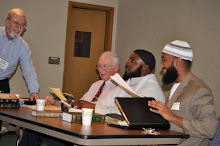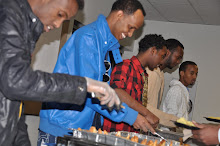
Lefse: A Scandinavian tradition
By Amy Bowen • abowen@stcloudtimes.com • October 14, 2009
Read Comments(6) Recommend(5)Print this pageE-mail this articleShare
Del.icio.usFacebookDiggRedditNewsvineBuzz up!TwitterFOLEY — With the precision of a master baker, Mike Romslo ever so gently rolled out a paper-thin piece of lefse Tuesday night at Henry’s Banquet Center.
Romslo lives in International Falls, and drove down to visit his daughter Lisa Wruck, who lives in Foley. Wruck, asked him to help make lefse for the Gustavus Adolphus Lutheran Church’s annual fall dinner Oct. 21.
Romslo, who proudly claims he’s 100 percent Norwegian, happily made the trip, and joined about 12 volunteers who made 100 dozen lefse rounds Monday and Tuesday night.
Romslo knows lefse. He grew up on it. Christmas isn’t Christmas without lefse, he said.
His sentiment is shared by the other church members and family members who took part in the lefse-making project.
The Foley church’s dinner and bake sale, both offering homemade lefse, is the church’s only fundraiser, said Connie Henry, who served as one of the head lefse makers. The church has made the lefse for at least 35 years, she said.
For those who aren’t Scandinavian, lefse is like a potato crepe. Church lefse makers peeled potatoes, boiled and mashed them. They then added a little salt, white pepper and sugar and “lots of butter and whipping cream,” said fellow lefse maker and owner of Henry’s Banquet Center Sharon Henry. She is not related to Connie Henry.
“That’s Norwegian,” Sharon Henry said. “You need butter on everything.”
The dough is chilled until workers are ready to use an ice cream scoop to make balls.
That was Alvin Henry’s job Tuesday night. Connie Henry is his wife. He laughed and chatted with fellow bakers as he made the dough balls. The community really looks forward to the lefse, he said.
It doesn’t matter if they’re Scandinavian, he said with a chuckle.
“We spoil people,” he said.
Marilyn Hovde, one of the lefse rollers, has been spoiled for almost 40 years. She’s Dutch and Swedish. Her husband is 100 percent Norwegian, she said.
“I didn’t know what lefse was until I married (him), and now I love it,” she said as she rolled the dough balls into thin disks.
The lefse is then carefully transferred to a hot lefse pan and cooked until just browned and bubbly. Romslo carefully watched his lefse puff up ever so slightly before he removed it.
“You just get the feeling,” he said of knowing when to take it off the heat.
The lefse is then cooled under blue towels to keep it from drying out. Blue just happens to be one of the colors featured on the Norwegian flag.
After the lefse is cooled, workers packaged it in plastic bags for use later.
How people enjoy the finished lefse is up to them. Some like white sugar. Others swear by brown sugar. Everyone loves butter.
Romslo sprinkles brown sugar on his and rolls it up.
“And sometimes (I add) butter,” he said. “But I’m staying away from that.”


















































No comments:
Post a Comment